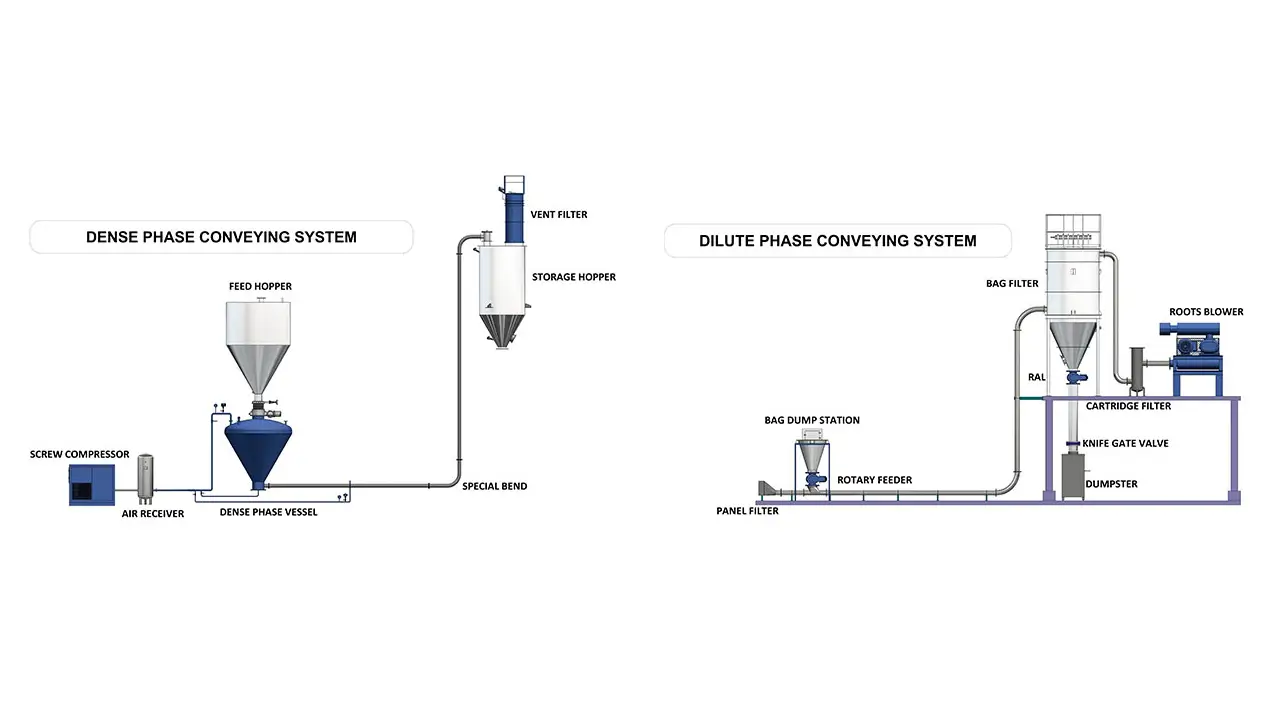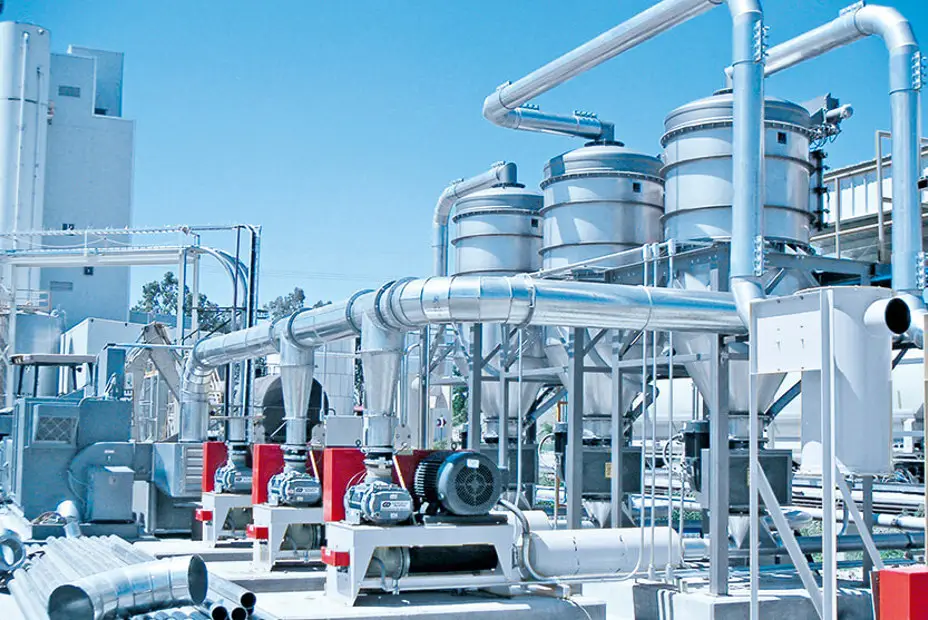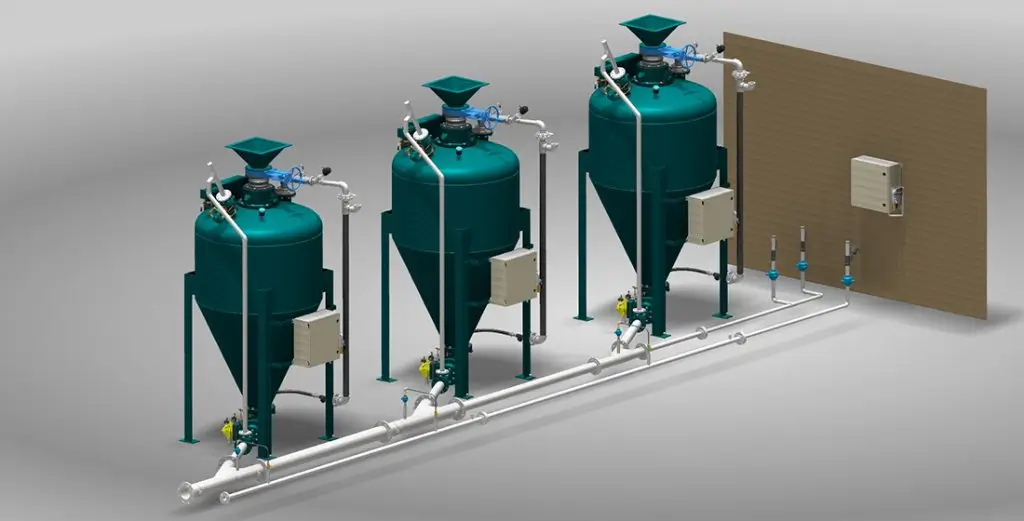Pneumatic conveying systems are generally divided into two main types:
1. Dilute Phase Conveying
-
Working Principle:
Material is suspended and transported within a high-velocity airstream. -
Key Parameters:
-
Air Velocity: High (18–30 m/s)
-
Pressure: Low (0.02–0.09 MPa)
-
Distance: Best suited for short distances (≤300 meters)
-
Dust Concentration: Suitable for low to medium concentrations (1–10 kg/m³)
-
-
Advantages:
-
Lower initial investment
-
Simpler maintenance
-
Broad material compatibility (suitable for nearly all bulk solids)
-
-
Disadvantages:
-
High velocity may lead to material degradation, excessive dust generation, and increased pipe wear
-
Higher energy consumption, especially in short-distance or small-batch applications
-
2. Dense Phase Conveying
-
Working Principle:
Material is conveyed in a plug flow or slug form, not suspended in the air stream. -
Key Parameters:
-
Air Velocity: Low (2–10 m/s)
-
Pressure: High (0.3–0.7 MPa)
-
Solid-to-Gas Ratio: High (≥25)
-
-
Advantages:
-
Reduced pipeline wear and minimal material degradation—ideal for fragile materials (e.g., lithium battery powders)
-
More energy-efficient for long-distance conveying
-
-
Disadvantages:
-
Requires systems capable of delivering high pressure
-
Higher installation cost due to larger pipe diameters
-
How to Choose Between Dilute and Dense Phase Conveying?
-
Material Characteristics:
-
Use dilute phase for non-abrasive, fine particles (e.g., plastics, food ingredients).
-
Use dense phase for abrasive, fragile, or sticky materials (e.g., cement, fly ash).
-
-
Distance and Pressure Requirements:
-
Dilute phase is preferred for conveying distances under 300 meters.
-
Dense phase is ideal for distances beyond 300 meters, provided adequate pressure is available.
-
-
Economic Considerations:
-
Balance the lower initial cost and simpler maintenance of dilute phase systems against the long-term energy savings and reduced material damage offered by dense phase systems.
-




